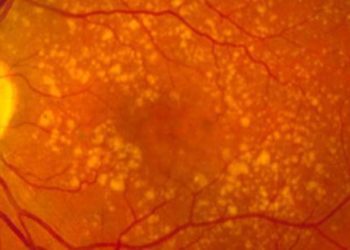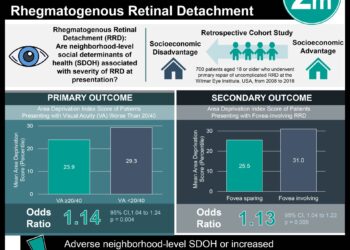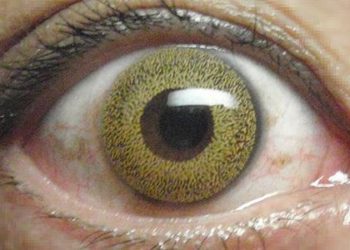Binocular eye tracking-based device is non-inferior to patching for the treatment of amblyopia
1. In a small randomized controlled trial, children with amblyopia who used a newly developed binocular dichoptic home device had similar visual acuity at 16 weeks to children whose dominant eye was patched.
2. Treatment adherence was significantly higher in the device group than the patching group, at 91% compared to 83%.
Evidence Rating Level: 1 (Excellent)
Study Rundown: Amblyopia is a common disorder in which vision is poorer in one eye due to abnormalities during visual development, such as uneven refractive error or strabismus. It is traditionally treated with monocular therapy, penalizing the dominant eye with patches or dilating drops, but in recent years, several new binocular treatment methods have been developed. Children are presented with dichoptic (separate for each eye) images that are blurred in the dominant eye while stimulating the amblyopic eye. This study aimed to assess the efficacy of one such device, CureSight, compared to patching. A total of 103 patients with amblyopia were randomized to treatment with CureSight or patching for 16 weeks. At week 16, visual acuity in the amblyopic eye had significantly improved in both groups, by 0.28±0.13 logMAR units in the CureSight group and 0.23±0.14 in the patching group, meeting the primary endpoint of non-inferiority. Visual acuity in the majority of patients in both groups improved by 2 lines or more. Stereoacuity, representing use of both eyes, also improved significantly in both groups but did not differ between groups. Adherence to treatment based on total treatment time was 91% in the CureSight group and 83% in the patching group. This small randomized trial convincingly showed non-inferiority to patching, making the CureSight device one of the most rigorously studied of the recently developed binocular treatment systems and therefore a useful new treatment option. While adherence was significantly higher with the device, however, it is far more expensive and complex to implement than patching without showing superior visual acuity or stereoacuity outcomes at 16 weeks.
Click to read the study in Ophthalmology
Relevant Reading: Recent advances in screening and treatment for amblyopia
In-Depth [randomized controlled trial]: Children aged 4 to 9 at multiple centers in Israel with best corrected visual acuity between 20/32 and 20/100 in the amblyopic eye were randomized 1:1, then treated between 2020 and 2022. Patients with amblyopia due to large angle strabismus or changes in prescription in the previous 16 weeks were excluded. Children in the CureSight group watched videos on a computer through glasses that selectively blurred central vision in the dominant eye based on input from an eye tracker. CureSight treatment was for 90 minutes, 5 days per week, while patching was for 2 hours, 7 days per week. About half of patients had previously undergone patching, while half had never been treated. The primary non-inferiority outcome was based on a modified intention-to-treat analysis, but visual acuity difference did not significantly differ in a per-protocol analysis either. The difference between CureSight and patching groups in least-squares mean improvement in amblyopic-eye visual acuity at 16 weeks was 0.034 logMAR units, with a 90% confidence interval (CI) of -0.008 to 0.076, less than the pre-defined non-inferiority margin of -0.10 logMAR units. The difference between groups in change in stereoacuity was 0, with a 95% CI of -0.27 to 0.27 (p=0.76). The difference in binocular visual acuity improvement at 16 weeks was also not significant.
Image: PD
©2022 2 Minute Medicine, Inc. All rights reserved. No works may be reproduced without expressed written consent from 2 Minute Medicine, Inc. Inquire about licensing here. No article should be construed as medical advice and is not intended as such by the authors or by 2 Minute Medicine, Inc.







